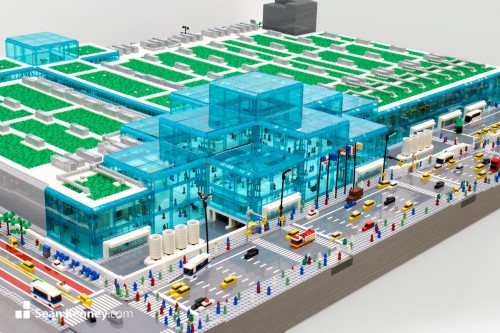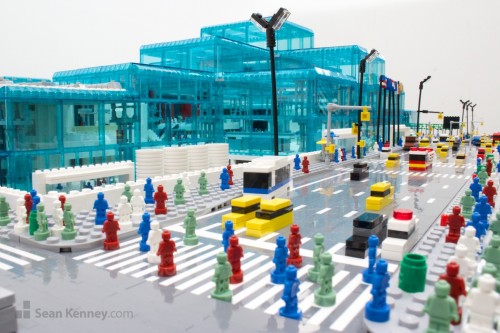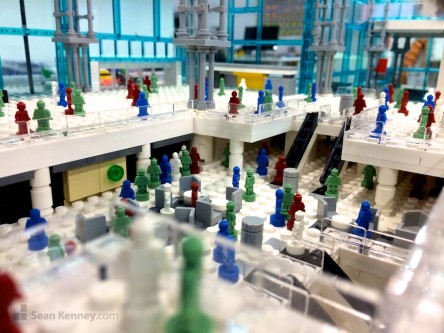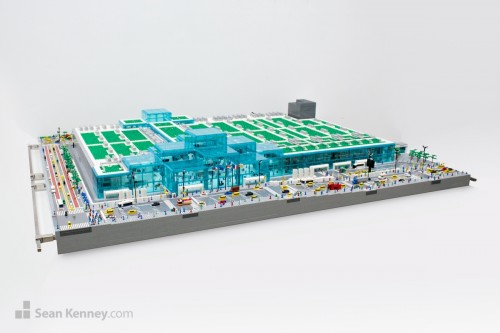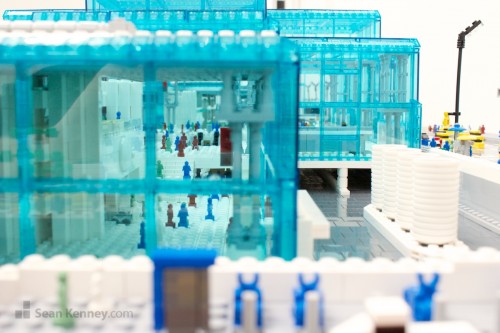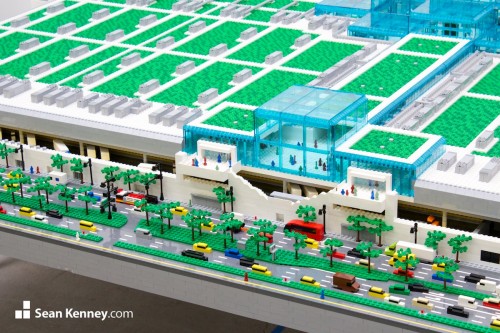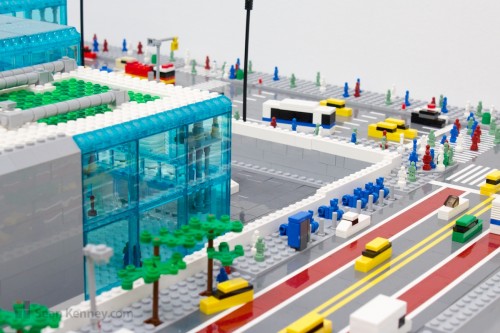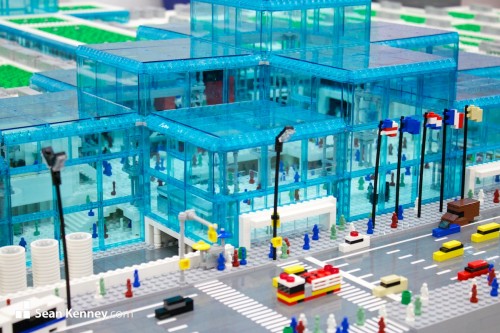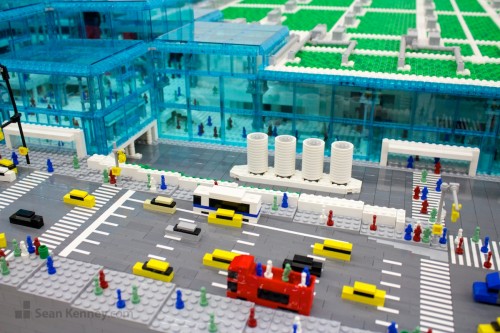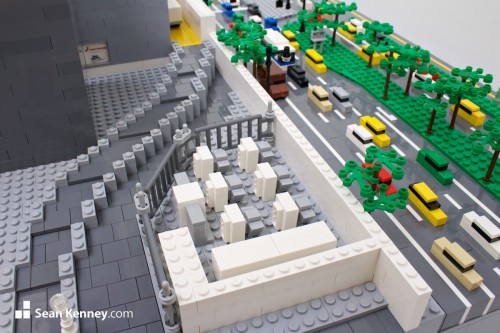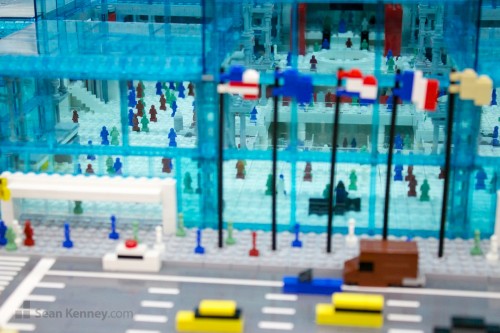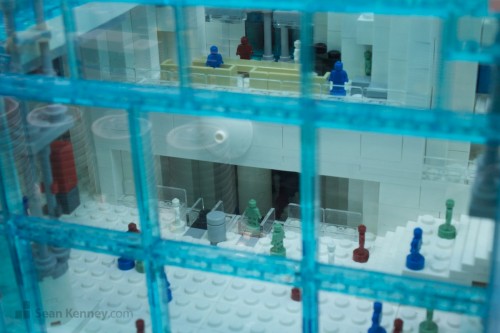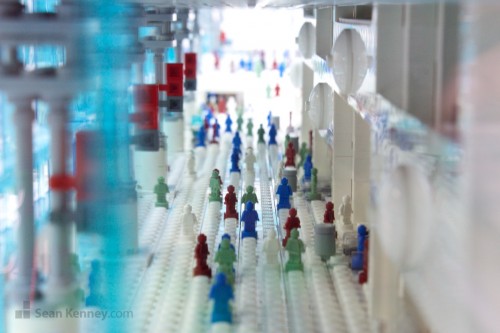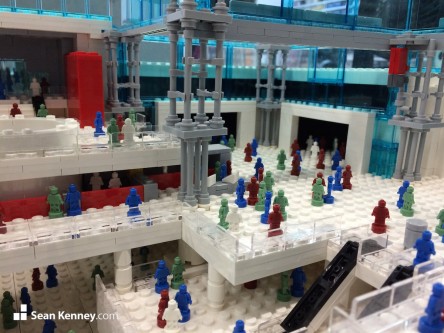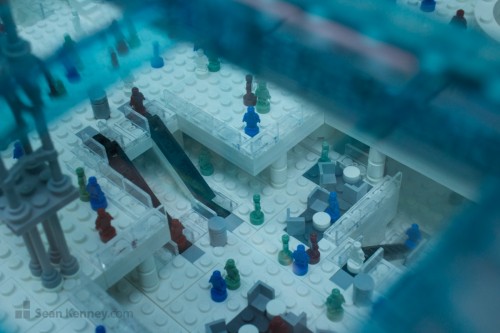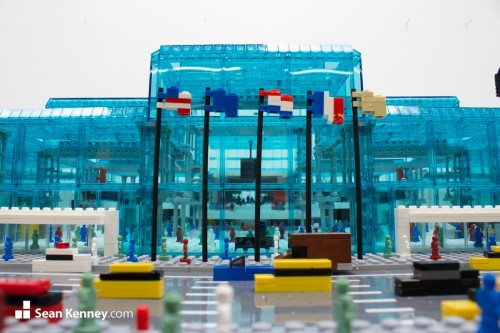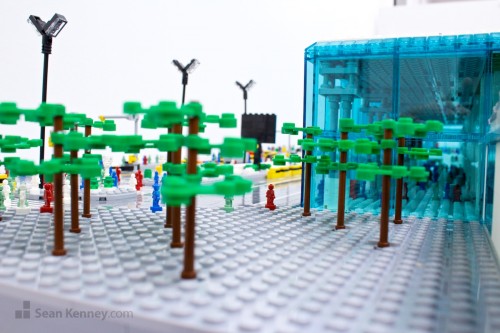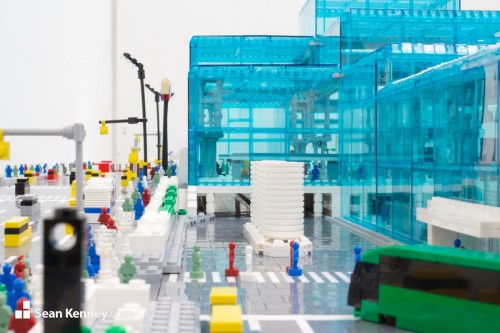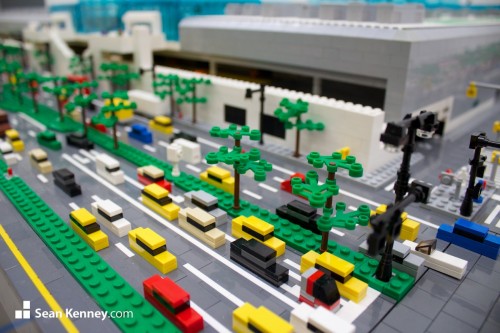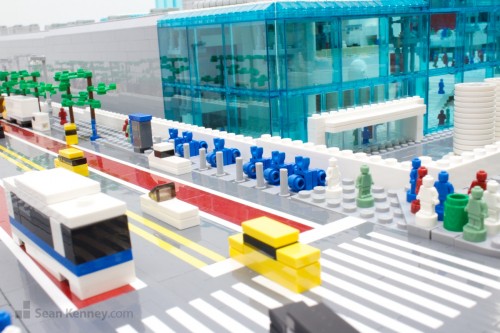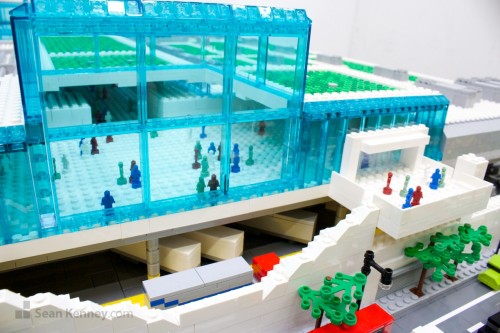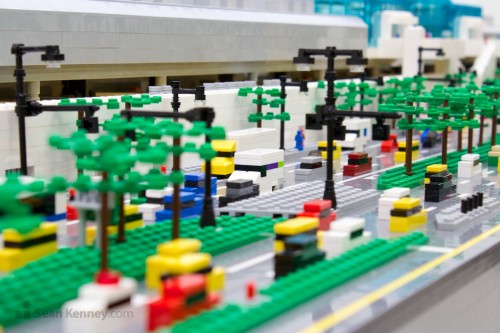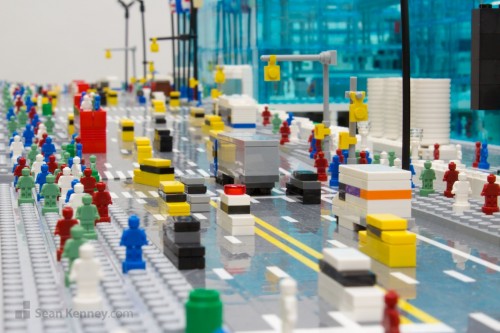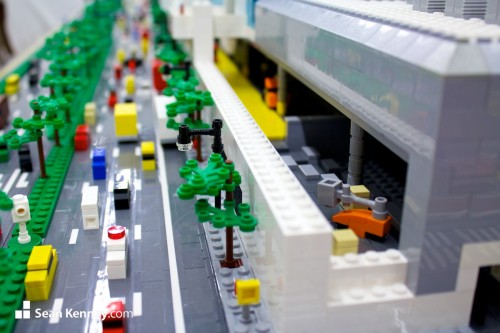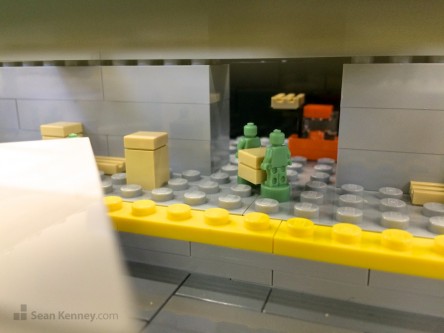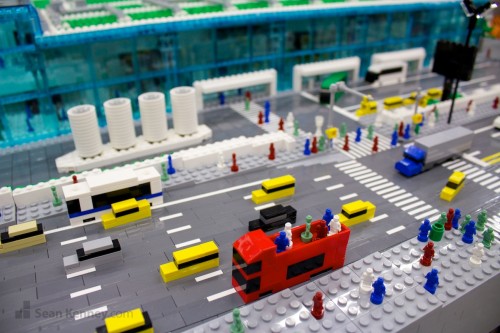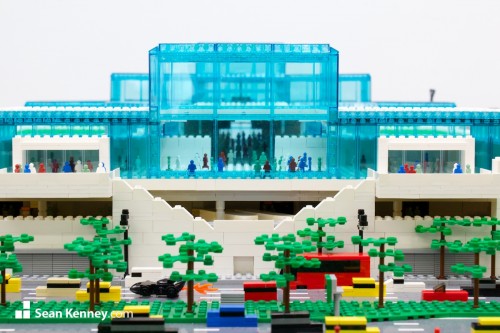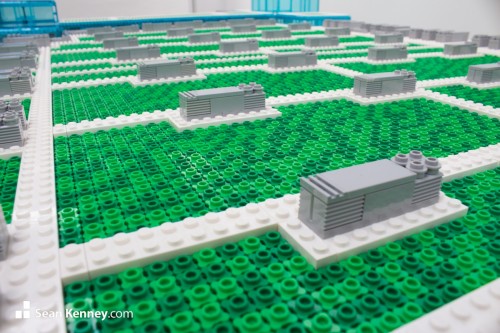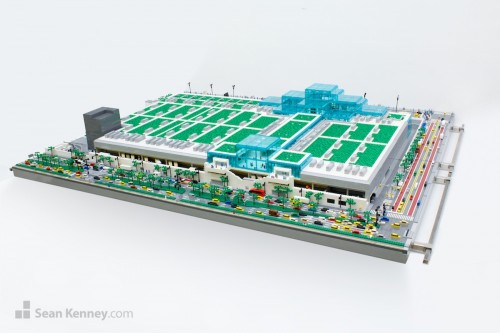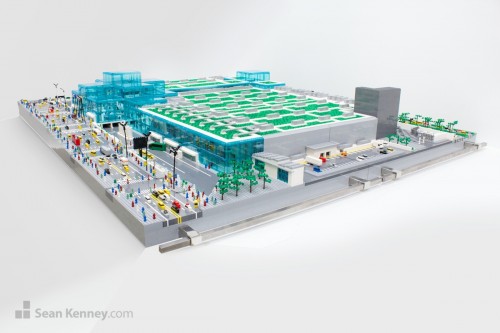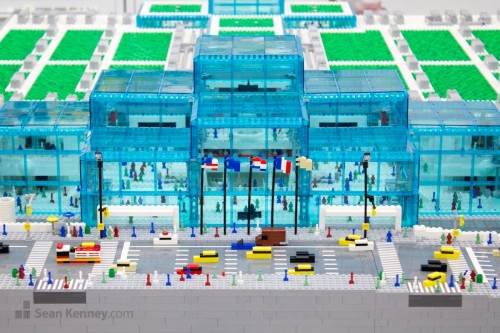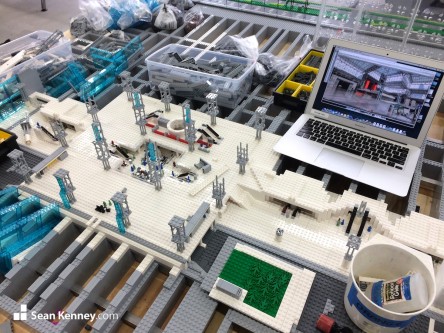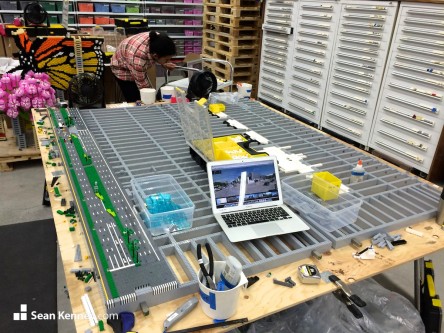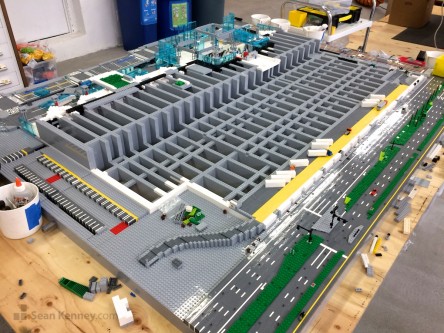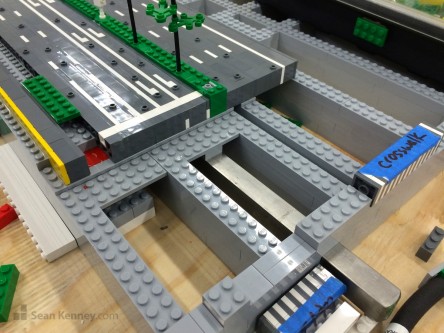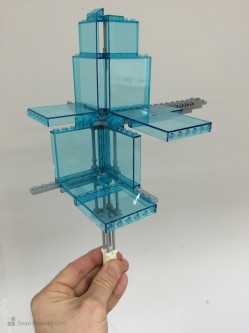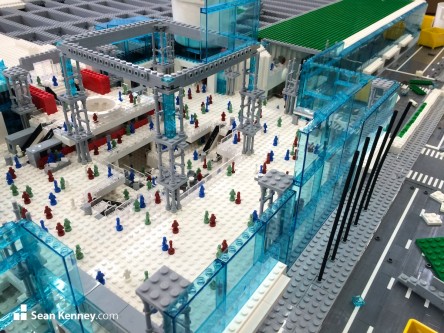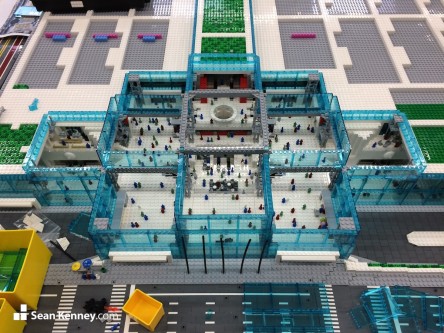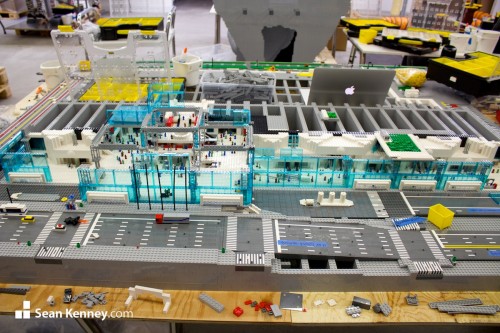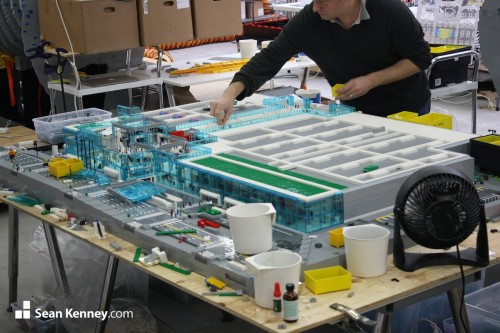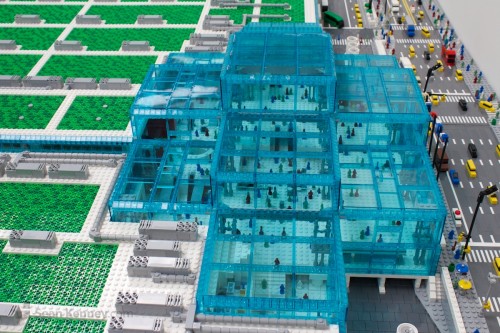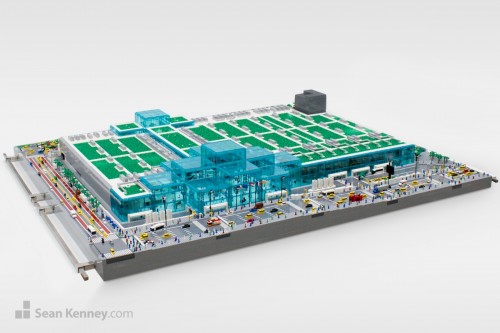This model of New York City’s Jacob K. Javits Convention Center is over 7 feet wide, contains 114,470 LEGO pieces and took 440 hours to design and build over the course of two months. It is on public display inside the real Javits Center.
Watch us build the model (3 minutes)
The model is built entirely with standard off-the-shelf LEGO pieces; every piece interconnects to hold the model together properly; there are no “cheats” with with non-LEGO elements or cutting or glue.
There are over 300 vehicles and 7,000 micro figures in the model.
The tiny figures in the model are a piece intended for a LEGO minifigure to hold as an award trophy. If you placed a regular LEGO minifigure in this model, it would be the scale equivalent of 43 feet tall!
Interiors
The real building recently replaced its infamous mirrored glass façade with new clear glass. It was therefore important to me that the entire model have a truly transparent façade … which then of course meant I had to build the entire interior of the building!
Designing the 1-inch-tall escalator took 20 prototypes and 7 hours.
I love that you can see straight through the building in many places (above, below).
Around the building
New York City hot dog vendor! (above)
A Smart ForTwo (and many other cars) wait to turn onto 34th Street. (above)
This little Citibike bike share dock station is my favorite exterior detail. (above)
Is that Optimus Prime in the loading dock?? (above)
Ornate streetlights along the West Side Highway (above)
A view into the Crystal Palace (above)
Traffic along 11th Avenue (above)
Crates and equipment on the loading dock (above, below)
A double-decker tour bus makes its way along 11th Avenue (above)
Is that the Batmobile heading down the (Adam) West Side Highway?? (above)
The green roof is built with 14,560 tiny plant pieces. (above, below)
Building it
The model is nearly 7 feet long and over 5 feet wide, contains 114,470 LEGO pieces, built over the course of 2 months with 4 of my assistants.
I designed the model using any information I could find online: satellite photos, photos taken by tourists, floor plans from convention web sites, lots of Google Street View… I even found some panoramas taken inside parts of the building (above) and a drone video which I watched frame-by-frame. The entire model is built in two sections to make it easier to move around.
Because the model is only about 9 inches tall, I built a grid through the entire street slab and building, from the base to the roof. (above, below). This makes it very rigid and prevents the model from bowing when lifted. The grid also serves as a set of beams that hold up the roof.
The roadways are built sideways so that I could use the thin side of LEGO plates to create lane markings and crosswalks. (below)
Steel bars extend through the base and form handles on either side of the model to make it easy to move.
Part of the real building’s renovations replaced its infamous mirrored glass façade with new clear glass, to make the building less imposing and more of a public space. It was therefore important to me that the entire model have a truly transparent façade … which then of course meant I had to build the entire interior of the building!
To support the clear “glass” pieces that make up the crystal palace, I had to recreate the real building’s columns and framework very literally.
It took a lot of planning to get all of the proportions, alignments, and dimensions correct. For example, you can see the basement escalators through the façade… The escalators are next to a support column, which is aligned with another support column, which holds up the first level of the glass roof, which aligns with the second and third levels of the glass roof, which centers on the front entrance of the building. So in other words… I couldn’t build the escalator in the basement until I knew how wide the front entrance was. Crazy.
It seems easy when you see the completed model, but I had to do a lot of measuring and prototyping (and tearing apart and rebuilding) to get it right!
The ground around the building is not flat — the roadways slope up and down to three different ground levels. Below (center) you can see one of the ramped sections of 11th Avenue staged in place while I measured to make sure it was the correct length.
The entire model took 440 hours to create.



